The Opposite of Redwoods
illustration by Jane Kim, Ink Dwell Studios
We’re delighted you have joined us as Sempervirens Fund’s first Forest Fellow! What does being a Forest Fellow mean to you?
"It’s an incredible honor. Redwoods are one of the wonders that first pulled me to California more than 20 years ago. I still feel this awe that drew me to Northern California. To be the first Sempervirens Fund Forest Fellow brings a smile to my face."
What do you hope to accomplish as a Forest Fellow?
"I hope to learn as much as I can about coast redwoods forests and create art that deepens our relationship with these spectacular ecosystems."
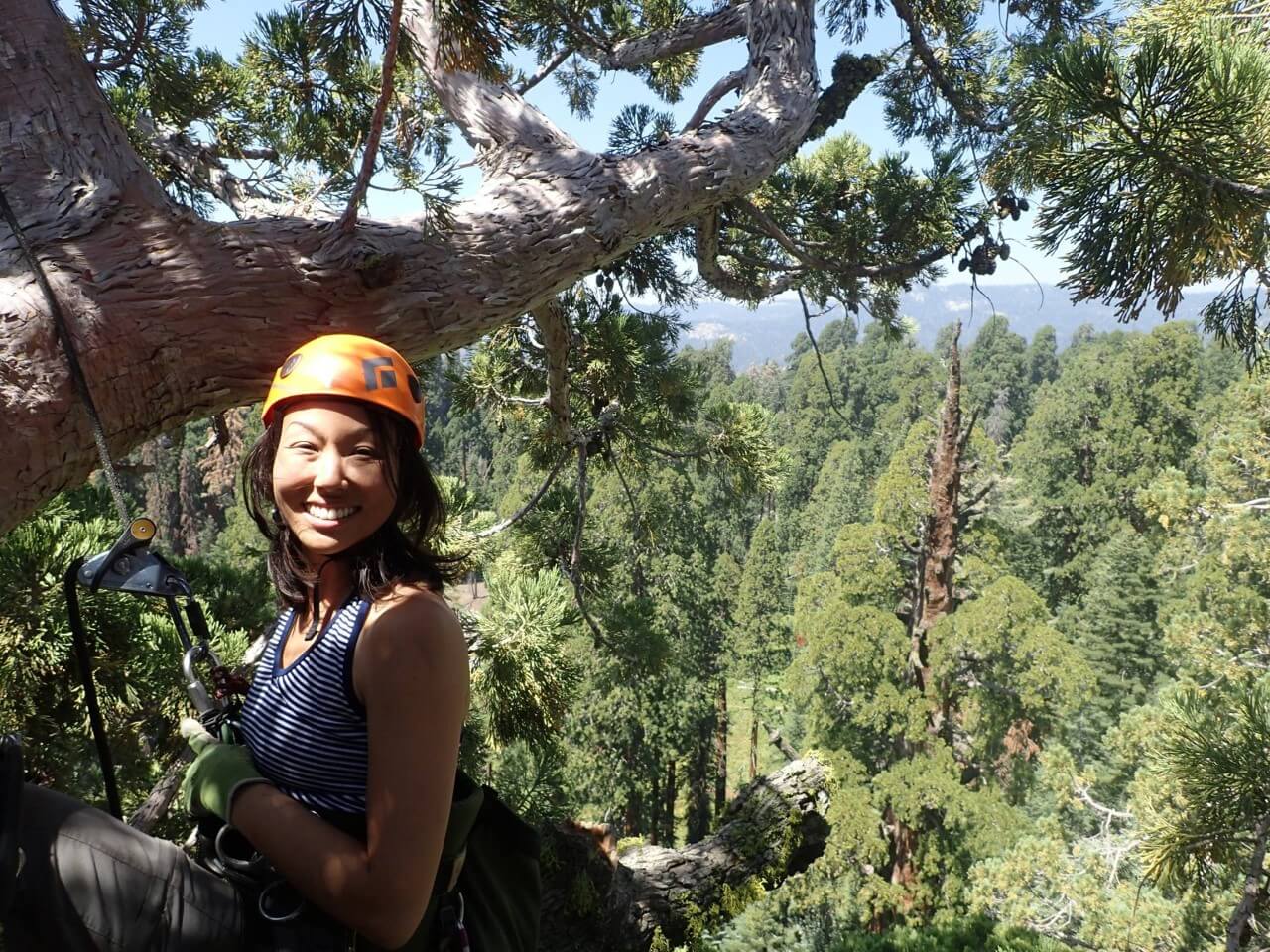
Jane Kim, fine artist and Sempervirens Fund's first Forest Fellow, courtesy of Ink Dwell Studios
What draws you to redwoods and the habitats and species of the Santa Cruz Mountains region?
"I’ve loved trees my whole life, and coast redwoods are some of the most extraordinary. From their lifespan and magnitude to all their invisible secrets of survival, coast redwoods hold eons of wisdom. The Santa Cruz Mountains are especially interesting because of their more pronounced climate zones relative to the northern range. For example, in the southern range, redwoods are having to adapt to higher temperatures and less fog. We can observe adaptations of redwoods between varying climates to understand their survival limits."
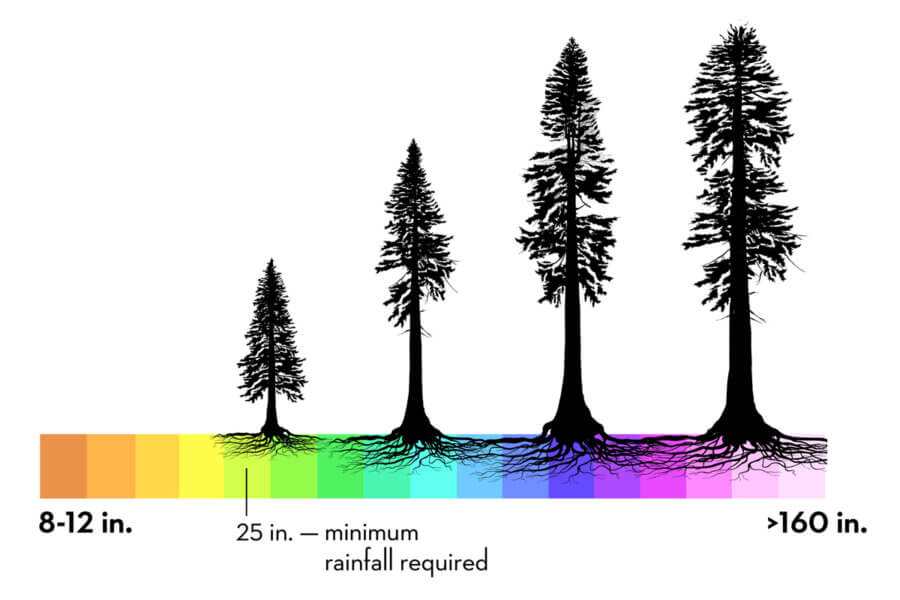
illustration by Jane Kim, Ink Dwell Studios
Did the CZU Fire change how you see, connect with, or depict redwoods or other species in the Santa Cruz mountain region?
"Of course! I knew that redwoods are resilient, but I had no idea that there were so many adaptations invisible to the naked eye like the tree’s amazing ability to store arbuscular-mycorrhizal fungi (AMF), in unique structures in their roots referred to as “rhizonodes.” This is just one example! So many others that I’m learning along the way. It shook my own understanding of dying, dormancy, regeneration, and cycles."
Watch a resilient redwood stump surprise Jane in episode 2 of Curiosity Stories.
On the 4th anniversary of the CZU Fire, you shared that redwood trees might be our exact opposite in nature. Could you tell us more about this idea?
"I think of redwoods as our opposite in their approach to living. They play the long game! Our lifespan averages ~80 years and I do believe that limits our ability to truly be long-term planners.
A redwood’s life can span more than one thousand years. And the way the redwood is able to live this long is by adapting to its environment rather than controlling the environment. The fog loving trees can even produce a bit of its own fog! Terpenes, the compound that give redwood its odor, when released into the air, they form tiny particles that can become the condensation nuclei, or seed, for fog.
People on the other hand, want to control their environment to fit the monoculture life that we have created. Trees in the Santa Cruz Mountains look different than the ones in Humboldt because they have adapted to different places. Let’s look at Arizona or even Southern California. No matter the environment, humans force a certain way of living. In these drier climates, if we were like redwoods, we’d create homes and infrastructure in an adaptive manner like using composting toilets instead of ones that use water. Homes could be subterranean so less energy would be used for air conditioning. But humans define a standard of living and wildly alter the environment to meet the standard. It’s all backwards!"
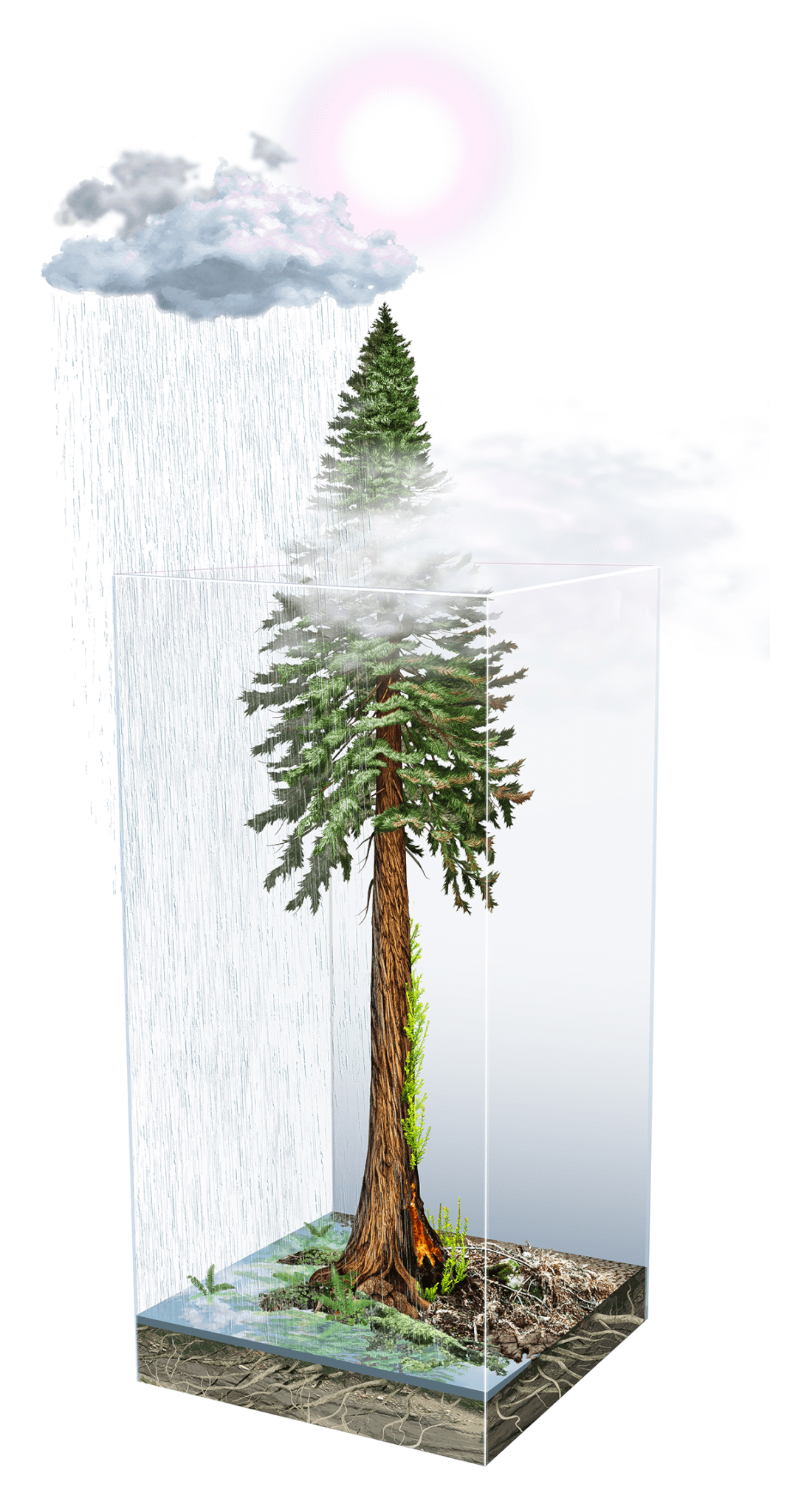
illustration by Jane Kim, Ink Dwell Studios
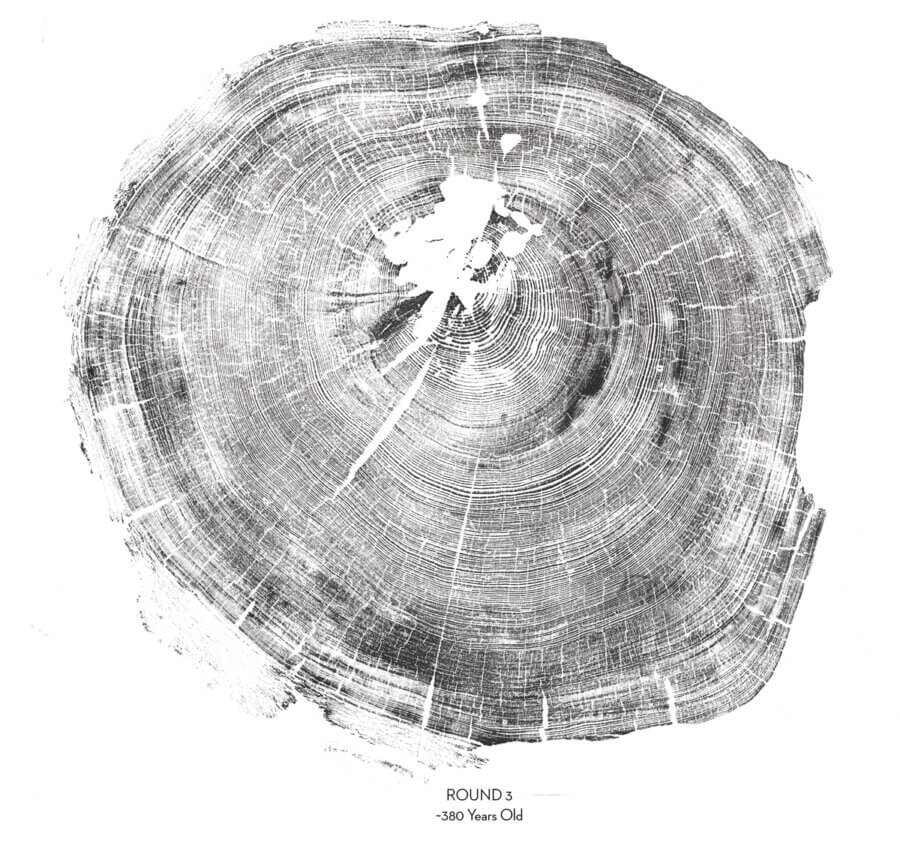
illustration by Jane Kim, Ink Dwell Studios
How are you exploring humans’ relationship with the elements in your current series?
"I am printing a redwood cookie that was collected at the Gateway to Big Basin. This is reminiscent of logging and our initial relationship to redwoods as a lumber source."
You recently shared your piece FIRE which layers detailed painted woodpeckers atop a black and white print of tree rings seemingly lit from fire within its cracks. What can you tell us about the inspiration behind this piece and the woodpecker’s role?
"There will be four pieces in this upcoming series. Each one will focus on our classical elements—fire, water, earth, air—and how redwood forests are interconnected. Pileated woodpeckers benefit from burned snags and cavities in redwood forests. Their nests are then used by several smaller birds and animals. Ultimately, FIRE will depict several stories about the impacts of fire on a redwood tree and forest."
Can you share your process to create art like this?
"My practice as an artist starts with a story and then grows with research. I knew that I wanted to explore redwoods from many angles and the elements felt like a way to tell a whole story. What makes their way into the final artwork really depends on the journey research takes me. One of the most exciting things about the Forest Fellowship is the access and support I have to research, field trips, and scientific community. Without the support and collaboration of Sempervirens Fund, I couldn’t have collected the massive redwood rounds from the stump at Jones Gulch YMCA camp."
Watch Jane cut a “cookie” round from a redwood stump in episode 1 of Curiosity Stories.
What do you hope your work in this series will inspire?
"At the end of the day, reality is simply shaped by collective perspective. Art has, since the dawn of mankind, shaped our perspective. I hope that by celebrating redwood adaptations, we may be inspired to adopt some of those into our own decisions around human infrastructure and the role we play within the ecosystem rather than dominating and changing it."
Want a behind the scenes peek at the redwood art Jane Kim has been working on at Ink Dwell Studios? Watch Jane Kim take nature from Forest to Canvas Under the Redwoods.
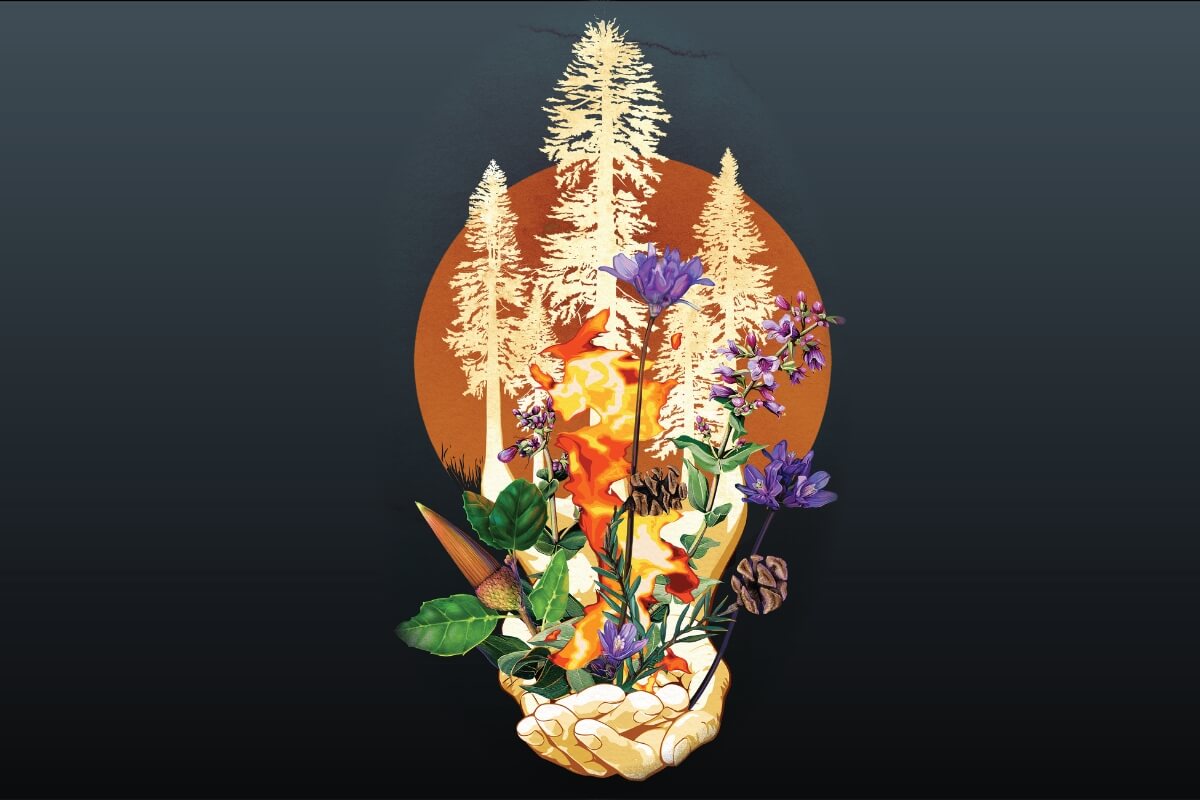
illustration by Jane Kim, Ink Dwell Studios
More to Explore
- Watch Jane embark on her journey to learn more about redwoods in Curiosity Stories
- See Jane’s work illustrate complex concepts in our Redwoods and Climate series
- Learn how Jane transforms science into art in Illustrating Nature Under the Redwoods


